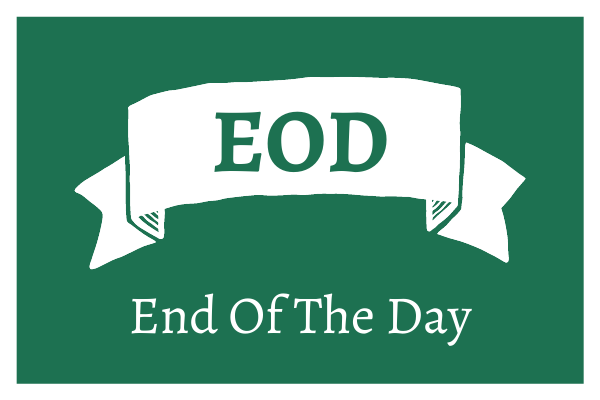EOD Full Form: The term “EOD” stands for “End of Day,” signifying the moment when trading activities cease in financial markets. At this juncture, all trades are finalized, and any ongoing operations come to a close. Understanding EOD is crucial for investors as it can significantly impact investment strategies, influencing decisions on whether to buy or sell stocks. Let’s delve deeper into how EOD functions in markets and its implications for investors.
EOD Full Form: End of Day
Trading Day Dynamics in Financial Markets | EOD Full Form
Trading days typically span either 12 hours or 5 hours, depending on the market’s operating hours. Day traders and stock market participants usually engage in trading activities from 7:00 a.m. to 4:30 p.m., or alternatively, from 5:00 p.m. to 9:30 p.m. for short-term traders and market makers. However, these hours may vary based on customer requirements and geographical locations, considering different time zones across countries.
Understanding the End of Day (EOD) and Its Significance
The end of the business day marks the closure of most businesses and government offices, with critical information being removed from websites. For instance, banks may close their physical branches or suspend online services, hindering transactions and confirmations after closing hours. This practice aims to streamline operations and avoid the need for post-closure inquiries, minimizing potential financial losses for institutions like stock exchanges and financial service providers.
EOD in Financial Markets and Its Operational Implications
In financial markets, EOD signifies the completion of investment operations, including buying, selling, and holding stocks within brokerage frameworks. It defines each trading day’s beginning and end, serving as a standard practice among investors and financial managers. Trading typically commences around 7:30 a.m. and concludes late afternoon or evening, with brokers finalizing activities either before 7:30 p.m. or after 8 p.m.
EOD for Companies: Utilization and Implications
For companies, EOD represents the month’s final day, crucial for tax computation and financial year closure. Ensuring alignment between monthly and annual financial statements is essential to avoid legal complications and tax discrepancies. EOD coincides with the end of the financial year and budget cycle for companies, facilitating timely submission of quarterly and annual accounts to regulatory authorities.
Conclusion: EOD Full Form
The end of the day serves as a significant milestone, symbolizing closure and reflection on daily activities. It presents an opportunity for camaraderie and well-wishes among colleagues, highlighting the importance of being present and engaged. As each day concludes, individuals have the chance to make their presence felt and foster positive interactions in both professional and personal spheres.
In summary EOD Full Form, understanding EOD’s significance is paramount for navigating financial markets and organizational operations effectively, ensuring smooth transitions and informed decision-making at the close of each trading day.

